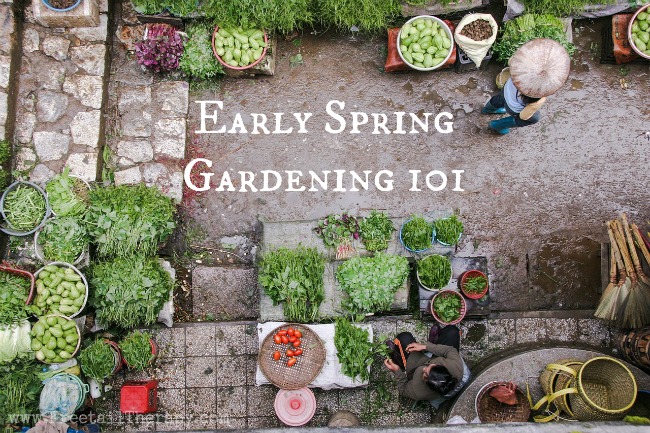Early Spring Gardening 101

Few times of the year are more exhilarating than early spring. When you garden, it’s especially exciting. For those who are just getting started, it’s helpful to know some of the basic steps toward preparing your garden for the summer’s growth. Here are some ideas and suggestions on early spring gardening.
Is Your Soil Ready?
Gardening involves a lot of dirt – which is really properly called soil – and learning when to work your soil is important.
- Working your soil too early subjects it to clumping and hardening, as it is usually too wet from melting snow and the decreased sunlight of winter. Wet soil makes cement-like clumps that are tough to break up.
- Working your soil too late can also be problematic, as any organic matter or lime you’ve added won’t have time to settle in and decompose.
- Take a good handful of soil from your garden site, and give it a squeeze. If it stays in a lump with your finger indentations clearly visible, it’s far too wet. But if you can give the lump a tap and it falls apart easily, then it’s ready.
Dig!
Digging is one of those things that just must be done. There are various ways to do it, and as a general rule, deeper is better.
- Gas-powered tillers are one option. They churn up the earth with rotating blades. They do well with chopping up weeds but may not get deep enough. To get rid of weeds and unwanted plant debris, take a look at the weed killers in the uk. These choices might be the right ones for you.
- Digging forks look like short, thick pitchforks. They are the same size as a full-length spade, and the tines are usually around 8 to 12 inches long. You push this into the soil and step down on it like you would a spade, then twist and “pry” up the soil, poking apart any large lumps.
- Full-length spades work well, too; you use them the same as you would a digging fork.
- Hoes and hand-cultivators are good for chopping into the soil and prying up weeds, and they are also good at digging and aerating the soil.
Fertilize
It’s a good idea to work some lime and compost into your soil. If you are lucky enough to live near a farm or have your own manure-producers, and you have access to a well-aged manure pile, this is a great form of compost. You can also create your own compost with yard clippings and kitchen scraps. Just make sure it’s well-aged; raw compost may carry harmful bacteria and tends to “burn” young plants.
Weed Control
After the soil is first turned and the sun warms the soil, weeds will begin to take over. It will proliferate so quickly that you’d have weed with just an inch of space from your teak garden bench within a month. You could either use a trimmer from https://kitchenhome.co.uk/best-cordless-hedge-trimmer/ or just use a mower to do that job. One of the easiest, earth-friendly ways to deal with this is to cover your garden with several layers of newspaper. Lay rocks or compost on the newspaper and then wet them thoroughly. When it’s time to plant, you can just make slits in the newspaper and insert seeds or seedling. Newspaper allows the soil to warm and “breathe,” unlike plastic and other weed-control covers.
If you don’t want to use newspapers, a thick layer of mulch will also help.



